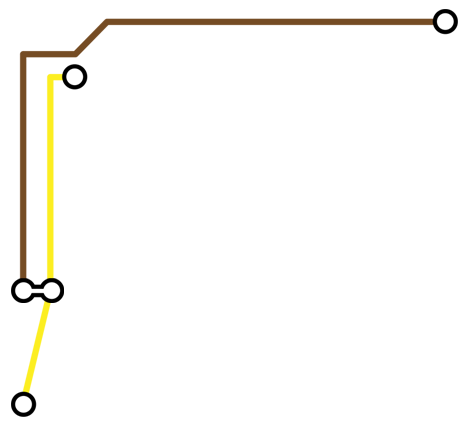Pedagogy Course Part I: Multimodal Composition and Assignment Development
The Multimodal and Online Pedagogies seminar balances the theoretical with the practical and is divided into two sections: the first half focuses on multimodal composition and the latter half on online education. In the first part of the semester, students read theory behind multimodal composition, including key articles such as Cynthia Selfe’s (2009) “The Movement of Air, the Breath of Meaning: Aurality and Multimodal Composing,” as well as excerpts from books such as Jody Shipka’s (2011) Toward a Composition Made Whole and Jason Palmeri’s (2012) Remixing Composition: A History of Multimodal Writing Pedagogy. Throughout the course, students draw from Selfe’s (2007) Multimodal Composition: Resources for Teachers when drafting their assignments, rubrics, and lesson plans. Much discussion also revolves around assessing assignments, based on the formative and summative evaluation strategies as proposed by Sonya Burton and Brian Huot (2007). For more information on readings and assignments used in the class, see Appendix B.
Assignments during this portion of the course include a digital literacy narrative, where the graduate students not only tell the story of the evolution of their digital literacy, but they also complete a multimodal project, choosing their medium according to their determined audience and purpose for the document. In this way, they experiment with multimodality much like their first-year composition students. Other assignments include an electronic teaching portfolio, complete with a teaching philosophy based on the theories of multimodal composition, along with three multimodal assignments they plan to use in future classes. The third assignment asks students to complete a project similar to those found in the Disputatio section of Kairos, reading the articles in the digital journal and making an argument of their own.
Perhaps the most important assignment is “The Multimodal Assignment,” which asks the graduate students to develop a multimodal assignment, swap the assignment with a peer, and then complete their peer’s assignment. Not only are they required to complete the multimodal project, but they are also asked to give feedback to their peer regarding how to improve the assignment. One of the goals of “The Multimodal Assignment” is to have students complete multimodal projects of their own, experiencing potential frustration that their first-year students might feel when asked to create projects beyond the text-based essay. Another goal is to assist them in becoming familiar with giving video feedback, which they are also encouraged to do in their online courses. Finally, a third goal is to help them revise their assignments in light of peer suggestions, adding a “Helpful Hints” section based on their peers’ review.
The instructor also leads several lecture series that help students develop syllabi and course assignments. For instance, the first half of the course includes lectures on developing rubrics that include a multimodal emphasis, as well as syllabus design for an online course, based on Scott Warnock’s (2009) Teaching Writing Online. Discussions in the course often focus on how to encourage multimodal projects in an online course that are beyond digital parameters, how to offer feedback on multimodal projects, and how to give the students enough direction toward developing a multimodal project without limiting their options or appropriating their choices. Students become comfortable first with multimodal assignment design before learning to scaffold these assignments in an online class, which is the focus of the second half of the pedagogy course.
Pedagogy Course Part II: Online Theory and Course Development
During the last half of the semester, the focus turns to online education. Students read from Beth Hewett and Christa Ehmann Powers’ (2004) Preparing Educators for Online Writing Instruction: Principles and Practices . Other sources include Mary Grant and Heather Thornton’s (2007) “Best Practices in Undergraduate Adult-Centered Online Learning: Mechanisms for Course Design and Delivery” and Patricia Boyd’s (2008) “Analyzing Students' Perceptions of Their Learning in Online and Hybrid First-year Composition Courses.” Throughout the course of the semester, there is a weekly online discussion, led by a different graduate student each week. Each graduate student is responsible for posting a question from one of the week’s readings and facilitating discussion by asking questions to keep the conversation going. In this way, they come to understand how their own students need active engagement in discussion boards to keep them interested in the topic and forming a community. They are responsible for keeping up with the board that week and facilitating discussion, serving as the moderator. The instructor of the course participates much like a student would.
In the online half of the semester, the main assignment is the development of the online course shell. In the first half, they have created their multimodal assignments, and in the latter half, they work to scaffold these assignments by developing discussion boards, reading response prompts, and other various exercises to facilitate learning. They also develop videos that correspond to all assignments, leading students through key concepts, including how to choose the appropriate medium for conveying the message. By the end of the class, students have an online course ready to teach, grounded in the theories of multimodal and online pedagogies.
The instructor also offers numerous workshops throughout the latter half that guide the class in creating and teaching the online course. We ask the staff at New Media and Extended Learning (NMEL), our online resources center, to attend a class session and lead students through the basics of Blackboard, our university’s LMS. They also visit the class during hands-on workshop sessions, or days that students can work on their course shell in class and ask questions of the NMEL staff. Other workshops teach students how to use Camtasia for creating supplemental course videos and Jing for providing multimodal feedback to students regarding their digital projects.
Reflections in Online Writing Instruction:
Pathways to Professional Development
Pathways to Professional Development
 |
 |
 |
 |
|
|
||||||
 |
|
||||||||||
|
|
|
||||||||||
|
|
 |
 |
 |
 |
 |
|
|||||
 |
|
||||||||||
 |
 |
 |
 |
 |
|
||||||
 |
|
||||||||||
 |
 |
|
 |
 |
 |
 |
 |
|
|||
|
|
|
|
|
|
|
|
|
|
|
|
|

Pedagogy Course
PATHS